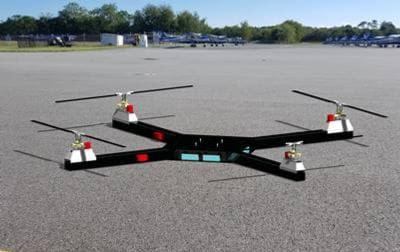Mon, Dec 27, 2021
Receives FAA Safety Research Grant To Design Testing Procedures for Certification
The Department of Aerospace Engineering at Embry-Riddle Aeronautical University has added some more prestige to the institution as a hub of aviation safety research with an FAA grant to study elements of the eVTOL revolution to come. The study is funded by $625,000 to "enhance the safety of a new class of electric propulsion-powered aircraft."

The research will aim to establish safe guidelines and pathways to certification, as well as the ways that their drivetrains differ from traditional aircraft. It is easy to take the wide knowledge base of stock, fuel based aircraft for granted - they are well understood in their failure modes, needs, and issues even in emergencies. The instant-on, high-output motors involved in many multirotor aircraft bring entirely different flight dynamics to the table, necessitating a new set of standards to adequately measure their safety. Somewhat like earlier revolutions in aircraft design, a number of competing systems, styles, and layout have all coincided to create a wide variety of flight dynamics. Doctor Pat Anderson, Aerospace Engineering professor and director of the Eagle Flight Research Center and co-principal investigator on the project has been working on the theme for a decade. In 2011, his center's EcoEagle flew as the first manned hybrid battery aircraft in the NASA Green Flight Challenge.

“At the Eagle Flight Research Center, we are well suited to create theoretical models but also to build experimental hardware to validate those models,” said Doctor Kyle Collins. The center has devised a testbed of a quadcopter using avionics to test different control strategies and aircraft behavior, hoping to write the book on what's best in emergency situations. “The difficult part of the adoption of a new type of aircraft propulsion is the safety aspect. We need to ensure that these new classes of aircraft have the same level of safety that we have all come to expect from commercial air travel," said Anderson.
“At the Eagle Flight Research Center, we are well suited to create theoretical models but also to build experimental hardware to validate those models,” Collins said.
More News
From 2023 (YouTube Edition): "Ain’t Your Daddy’s Super Cub”—Don Wade Co-owned by Don and Ron Wade—the former of Don’s Dream Machines, a storied >[...]
Pilot-Rated Passenger Reported That The Pilot Did Not Adequately “Round Out” The Landing Flare And The Airplane Bounced And Yawed To The Right Analysis: The pilot state>[...]
Dead Reckoning Dead reckoning, as applied to flying, is the navigation of an airplane solely by means of computations based on airspeed, course, heading, wind direction, and speed,>[...]
Aero Linx: Lake Amphibian Club This website is created and sponsored by the Lake Amphibian Club, to help spread the word about these wonderful, versatile amphibians that can land j>[...]
“I am deeply honored to be sworn in as NASA administrator. NASA’s mission is as imperative and urgent as ever — to push the boundaries of human exploration, ignit>[...]
 Classic Aero-TV: In Praise of Alabamas Patriot Aircraft USA
Classic Aero-TV: In Praise of Alabamas Patriot Aircraft USA NTSB Final Report: Cirrus Design Corp SR22
NTSB Final Report: Cirrus Design Corp SR22 ANN's Daily Aero-Term (12.21.25): Dead Reckoning
ANN's Daily Aero-Term (12.21.25): Dead Reckoning ANN's Daily Aero-Linx (12.21.25)
ANN's Daily Aero-Linx (12.21.25) Aero-News: Quote of the Day (12.21.25)
Aero-News: Quote of the Day (12.21.25)




